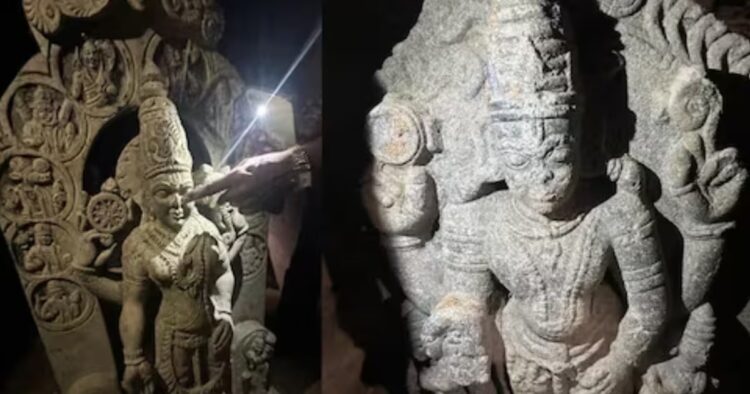During the construction of a bridge over the Krishna River near Devasugur village in Karnataka’s Raichur district, a remarkable discovery was made by the crew – ancient idols of Hindu gods. The idols, which are centuries old, include representations of Lord Vishnu’s Dashavatar and a shivling.
Eyewitnesses to the discovery noted the striking resemblance of the idols to the recently consecrated idol of Ram Lalla in the Ram Mandir of Ayodhya. This finding has sparked interest and speculation among locals and historians alike.
Upon the safe retrieval of the idols from the river, the crew promptly informed the local administration. The authorities are now working to ensure the preservation and proper study of these valuable artifacts.
Dr. Padmaja Desai, a lecturer specializing in Ancient History and Archaeology, expressed her excitement about the discovery. She highlighted the distinctive features of the Vishnu idol, which includes representations of the ten incarnations of Lord Vishnu. These incarnations, known as the Dashavatar, encompass various forms such as Matsya, Kurma, Varaha, Narasimha, Vamana, Rama, Krishna, Buddha, and Kalki.
Dr. Desai further elaborated on the craftsmanship evident in the idol, noting its intricate details and adherence to the guidelines set forth in the Agamas, ancient Hindu scriptures governing temple construction and idol making.
The standing posture of the idol, coupled with its radiant aura, adds to its allure and significance. Such discoveries not only shed light on the rich cultural heritage of the region but also provide valuable insights into ancient religious practices and beliefs.
Local authorities have assured the public of their commitment to preserving and studying these artifacts for the benefit of future generations. The discovery serves as a reminder of the deep-rooted spiritual and historical significance of the Krishna River and its surrounding areas.
As efforts continue to unfold, experts anticipate that further analysis of these idols will yield valuable information about the region’s past, enriching our understanding of ancient civilizations and their religious traditions.


















Comments